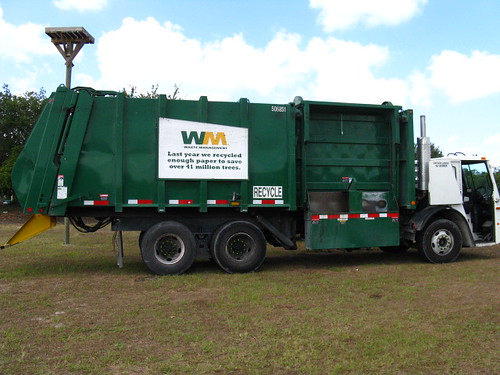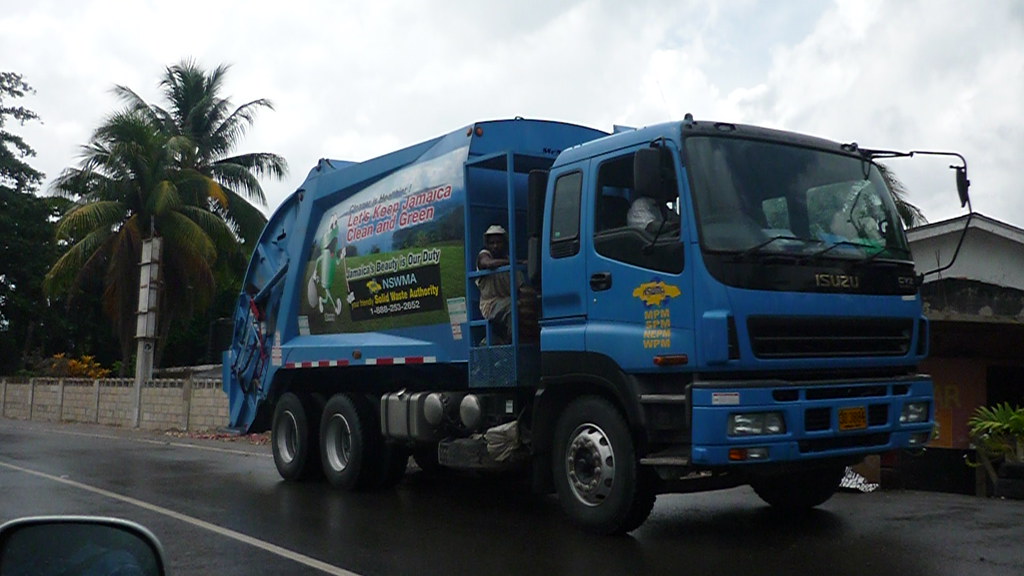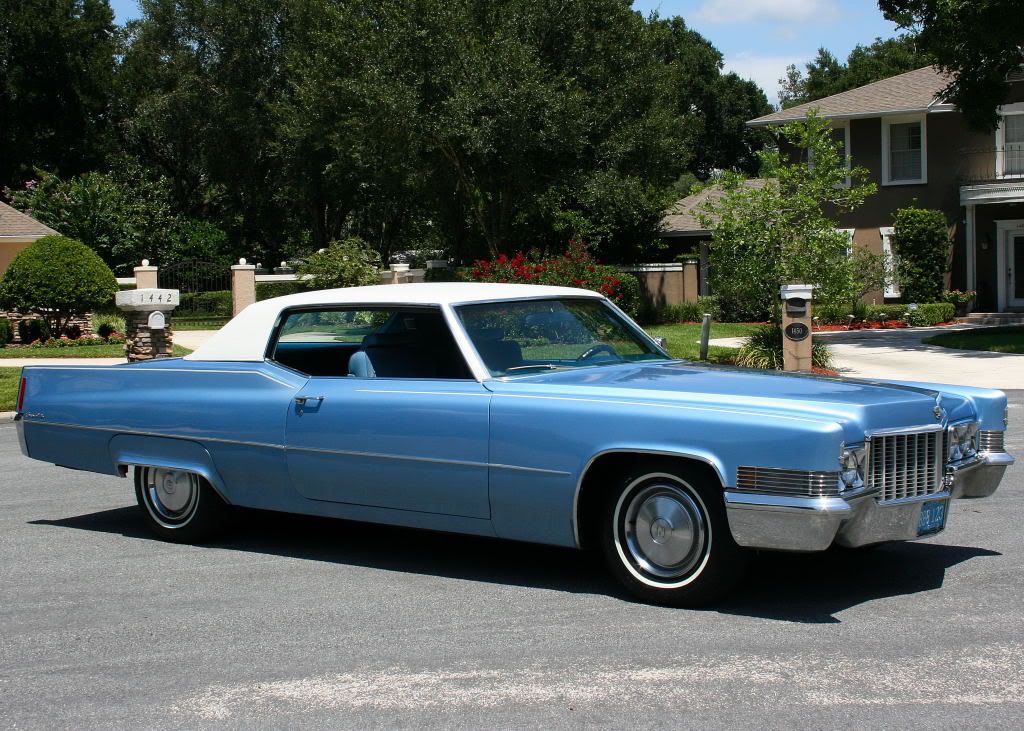
The open road beckons with promises of miles and freight, but for long-haul truck drivers, the journey is also a relentless test of endurance, focus, and, above all, alertness. Spending countless hours behind the wheel, often traversing familiar landscapes, can turn the rhythmic hum of tires and the unchanging scenery into a dangerous lull. This “white noise” and lack of visual excitement are primary culprits contributing to road fatigue, a silent killer that impairs judgment, slows reaction times, and significantly increases the risk of accidents.
While the temptation to reach for quick fixes like sugary energy drinks and caffeine-loaded pills is strong, experienced truckers know these are double-edged swords. Such temporary boosts often lead to inevitable crashes, leaving drivers more exhausted than before, and posing serious health risks. True, sustainable alertness doesn’t come in a can; it stems from a disciplined approach to physical well-being, strategic planning, and an array of tried-and-true methods that keep the mind sharp and the body responsive over thousands of miles.
Drawing from the collective wisdom of seasoned professionals, we’ve compiled 15 simple yet profoundly effective tricks that long-haul truckers use to stay alert and focused, transforming their cabs into mobile command centers of unwavering attention. These aren’t just tips; they are actionable strategies, designed to integrate seamlessly into your routine, empowering you to conquer fatigue and prioritize safety on every journey. Let’s dive into the first seven indispensable habits that lay the foundation for a safer, more focused haul.

1. **Prioritize Quality Sleep Before Driving**The single most critical defense against fatigue isn’t a trick or a stimulant; it’s genuine, restorative sleep before your wheels even start turning. Many experienced truckers emphasize that trying to “power through” a drive on insufficient rest is not only inefficient but outright dangerous. The Federal Motor Carrier Safety Administration (FMCSA) identifies driver fatigue as a leading factor in commercial vehicle accidents, and studies have shown that being awake for 18 hours can impair performance as much as being legally drunk.
This foundational principle means aiming for a full night’s sleep – ideally 7 to 9 hours of quality, uninterrupted rest – before embarking on any long haul. Consider your pre-trip sleep as non-negotiable preparation, just like checking your tire pressure or fuel levels. This deep rest allows your body and mind to fully recover, ensuring you start your journey with optimal alertness and cognitive function, rather than playing catch-up from the get-go.
To make this a reality, cultivate a consistent sleep schedule, even on your days off. This helps regulate your body’s natural circadian rhythms, making it easier to fall asleep and wake up refreshed. Create a sleep-conducive environment, whether at home or in your sleeper berth, by using blackout curtains, comfortable bedding, and minimizing noise. Silence phone notifications and power off devices that could disrupt your precious rest. Your truck can only go as far as your energy allows, and proper rest is truly the bedrock of alert driving.
Read more about: Unlock Your Potential: 15 Science-Backed Strategies to Shatter Workout Plateaus and Ignite New Gains

2. **Take Strategic Power Naps**Even with the best intentions and a solid night’s sleep, fatigue can still creep in during a long drive. When those heavy eyelids start to signal, smart truckers don’t fight it; they pull over and harness the incredible rejuvenating power of a short, strategic nap. Research consistently shows that even a brief rest, around 15 to 30 minutes, can significantly boost alertness, improve reaction time, and enhance overall performance without the grogginess associated with longer naps.
The key here is “strategic.” Don’t wait until you’re battling extreme drowsiness; instead, recognize the early warning signs of fatigue and act proactively. A power nap is a temporary reset for your system, allowing your brain a quick break to consolidate information and recharge. Always set an alarm to ensure you don’t oversleep and enter a deeper sleep cycle, which can leave you feeling more sluggish than before.
Think of these power naps as a crucial tool in your fatigue management arsenal, a supplement to quality sleep, not a substitute. They provide a vital bridge of alertness between longer rest periods, helping you navigate the mid-day slump or conquer the challenges of driving through the night. It’s a small investment of time that pays massive dividends in safety and focus.
Read more about: Unleash Your Inner Warrior: 15 Gladiator-Inspired Exercises for Modern Strength and Stamina

3. **Eat Healthy, Balanced Meals**The fuel you put into your body is just as important as the fuel you put into your rig when it comes to sustained alertness. While fast food might be convenient, its high fat, salt, and sugar content is a recipe for an energy crash, leaving you feeling sluggish and sleepy just when you need to be sharpest. Experienced truckers know that proper nutrition provides the long-lasting stamina essential for navigating thousands of miles.
The focus should be on “energy food” – complex carbohydrates, lean proteins, fresh fruits, and vegetables. Think 100 percent whole grains like oatmeal or whole grain bread, alongside lean meats such as grilled chicken or fish. These foods release energy slowly and steadily, keeping your blood sugar stable and preventing those notorious spikes and crashes that lead to drowsiness. Sarah, an owner-operator specializing in refrigerated goods, found that meal prepping grilled chicken, quinoa, and vegetables kept her energy steady all day, eliminating post-lunch crashes.
Prioritize light meals that fuel your body and mind without weighing you down. Large, greasy meals demand a significant amount of your body’s energy for digestion, diverting resources from your brain and making you feel tired. By making conscious, healthier food choices, you can ensure a consistent supply of energy that keeps your mind sharp and your body ready for the demands of the road.
Read more about: Unmasking the Saboteurs of Your Sleep: 15 Critical Routine Flaws Derailing Your Recovery Journey

4. **Snack Smart and Light**Just because you’ve had a healthy meal doesn’t mean your body won’t need a little extra boost between stops. Strategic, healthy snacking is another crucial tactic that seasoned truckers employ to maintain consistent energy levels and ward off hunger-induced fatigue. This isn’t about indulging cravings; it’s about providing your body with sustained, clean fuel throughout your drive.
Forget the large bags of M&Ms or other sugary treats that promise a quick jolt but deliver an even quicker crash. Those sugar rollercoasters are detrimental to sustained focus. Instead, opt for snacks that offer protein, fiber, and healthy fats, which release energy slowly and keep you feeling full and alert. Think a bag of almonds, a piece of fruit, or a small handful of trail mix.
These healthy, light snacks prevent extreme hunger pangs that can distract you and contribute to irritability. They help keep your blood sugar levels stable, acting as mini-recharges that prevent the dip in energy and concentration that often precedes drowsiness. By integrating smart snacking into your routine, you create a continuous flow of moderate energy, helping you stay sharp and focused without the unwanted side effects of processed junk food.
Read more about: Smart Style, Smarter Savings: 13 Affordable IKEA Finds That Mimic High-End Designer Furniture

5. **Stay Hydrated Consistently**It might seem like a simple concept, but consistent hydration is a cornerstone of alertness that many drivers overlook. Dehydration is an immediate and potent fatigue-causer, silently sapping your energy and clouding your focus long before you feel parched. Your body and mind operate optimally when well-hydrated, allowing for better cognitive function and sustained physical energy.
The trick isn’t to chug massive amounts of water at once, which can lead to frequent, disruptive bathroom breaks. Instead, the strategy is steady, consistent drinking throughout the day. Keep a water bottle easily accessible in your cab and sip from it regularly. Water is your best friend on the road; it keeps your system running smoothly, helps regulate body temperature, and directly combats the onset of fatigue.
Conversely, be wary of sugary drinks or excessive caffeine, which, while offering a temporary buzz, can ultimately contribute to dehydration due to their diuretic effects and lead to energy crashes. Prioritizing plain water ensures you’re fueling your body in the most effective way possible to maintain peak alertness, reducing fatigue and keeping your concentration laser-sharp for every mile ahead.
Read more about: Unmasking the Metabolic Saboteurs: 14 Sneaky Habits Quietly Killing Your Metabolism and What to Do About Them

6. **Move Your Body Regularly**Sitting for hours on end, as is inherent in long-haul trucking, can lead to physical and mental stagnation, a significant contributor to drowsiness. Your body needs movement to maintain proper blood flow and keep energy levels up. When you feel that familiar slump setting in, the most effective antidote isn’t more coffee; it’s getting out of your cab and moving your body.
During your scheduled breaks or whenever you feel tired, pull over safely and engage in some physical activity. This doesn’t require a gym membership or an elaborate workout routine. Simple stretches for your neck, shoulders, and legs can work wonders to boost circulation and relieve muscle tension. A brisk walk around your truck and trailer, perhaps while conducting a quick inspection to keep the authorities happy, can significantly perk you up.
Even a short 5-minute burst of activity can make a remarkable difference. It resets your focus, gets your heart pumping, and provides a much-needed mental break from the monotonous driving posture. This physical reset helps to wake up your system, improving overall alertness and ensuring you’re ready to tackle the next segment of your journey with renewed vigor.
Read more about: Unmasking the Metabolic Saboteurs: 14 Sneaky Habits Quietly Killing Your Metabolism and What to Do About Them
7. **Engage Your Mind with Audio Content**The monotony of long stretches of road can lead to “highway hypnosis” or wandering thoughts, both precursors to dangerous drowsiness. To combat this, experienced truckers often turn to audio content as a powerful tool for mental stimulation, keeping their brains actively engaged without diverting visual attention from the road. The goal is to occupy your mind just enough to ward off boredom and maintain a state of heightened awareness.
While upbeat music can certainly help lift your mood and energy, audiobooks and podcasts often provide a deeper level of engagement. Listening to someone else’s voice, following a narrative, or absorbing informative discussions requires more active processing than passively hearing music. Whether you’re into thrilling suspense novels, educational podcasts, or engaging interviews, choose content that genuinely interests you but isn’t so captivating that it becomes a distraction from the primary task of driving.
This strategy serves a dual purpose: it fights off boredom, which can quickly lead to fatigue, and it keeps your cognitive functions active, sharpening your focus on the environment around you. Combined with hands-free communication with friends or family, audio content transforms your cab into a more stimulating environment, making those long hauls feel less like a grind and more like an opportunity for personal enrichment and sustained alertness.
Navigating the vast expanses of the highway demands an arsenal of strategies, not just for preventing fatigue but for actively sustaining peak alertness over countless hours. Having established the foundational habits in our first section, we now delve into eight more advanced tactics and environmental controls that seasoned long-haul truckers employ. These aren’t just about avoiding the crash; they’re about optimizing every aspect of the driving experience, understanding the nuances of the body’s energy cycles, and leveraging every tool available to maintain unwavering focus and safety on the road.
Read more about: Unpacking the AI Revolution: 15 Must-Know Facts About ChatGPT’s Evolution and Impact

8. **Leverage Strategic Caffeine Use**While the first section cautioned against the pitfalls of excessive caffeine, many experienced truckers understand that when used wisely, caffeine can be a valuable ally in the fight against fatigue. The key, however, lies in its strategic deployment rather than relying on it as a primary energy source. It’s about measured intake to sharpen focus without the dreaded crash.
“Coffee is a go-to for a reason,” the pros attest, noting its ability to “kickstart focus without overloading your system if you pace yourself.” This means avoiding massive amounts early in the day that lead to a midday slump. Instead, consider smaller, more frequent doses that provide a steady, gentle lift rather than a jarring jolt.
The timing of your caffeine intake is equally crucial. To truly benefit, consume caffeine approximately 30-60 minutes before you anticipate needing an alertness boost, allowing time for it to enter your bloodstream and take effect. Opt for black coffee or green tea over sugary energy drinks, which often deliver a temporary high followed by a deeper crash due to their excessive sugar and stimulant content.
Remember, caffeine is a supplement to good rest, never a replacement. It should be seen as a tool to fine-tune your alertness during critical moments, not to override your body’s fundamental need for sleep. Furthermore, be mindful of limiting caffeine intake after midday to prevent it from interfering with your ability to achieve restorative sleep later on.
Read more about: Navigating the Digital Economy: 14 Companies Quietly Embracing Cryptocurrency Payments

9. **Boost Energy with Essential Vitamins**Beyond the macronutrients found in healthy meals, incorporating essential vitamins into your routine can offer a natural and consistent boost to your energy levels. It’s an often-overlooked aspect of holistic well-being that contributes significantly to sustained alertness on long hauls.
The context highlights the importance of “taking your vitamins,” specifically mentioning that “Certain vitamins, like B’s and C’s, give you energy.” These micronutrients play vital roles in your body’s energy production pathways and overall cellular function, impacting everything from metabolism to nerve function.
To maximize their effectiveness, it’s crucial to consume these vitamins alongside a healthy meal. As the wisdom goes, “your body won’t absorb them and you won’t realize their full benefits” if not taken properly. This ensures optimal absorption and integration into your body’s systems, providing a sustained and natural energy lift.
By ensuring your body has adequate levels of these crucial vitamins, you’re not just warding off potential deficiencies; you’re actively supporting your physiological processes to maintain a higher, more consistent level of energy and cognitive function throughout your demanding schedule. It’s another layer of proactive self-care that pays dividends in alertness.
Read more about: Unmasking the Metabolic Saboteurs: 14 Sneaky Habits Quietly Killing Your Metabolism and What to Do About Them

10. **Optimize Your Cab Environment**The immediate surroundings within your truck cab play a far greater role in your alertness than many might realize. A stuffy, dark, and overly warm environment is an open invitation for drowsiness, making it essential to actively manage your cab’s atmosphere to keep your senses stimulated and your mind sharp.
Creating a stimulating environment begins with lighting and air circulation. “Let natural light in when possible,” is a simple yet effective tip, helping to regulate your circadian rhythms during daylight hours. Similarly, “keep air circulating” to prevent the cab from becoming stale, which can quickly lead to feelings of lethargy and reduced focus.
A rapid change in temperature can provide a powerful, albeit temporary, jolt to your system. “Open your windows and let the oxygen flow!” is a classic trucker move. The context further explains, “This works particularly well if it’s toasty warm in your cab and cold outside. Like diving into cold water, cold air gives your system a temporary jolt, shocking your sense into alertness.” Maintaining a cool cab temperature, ideally between 65-70°F, also contributes significantly to sustained alertness.
By consciously managing the light, air quality, and temperature within your cab, you create an active buffer against the creeping onset of fatigue. These environmental controls are practical, cost-nothing techniques that transform your workspace into a more invigorating zone, helping you stay present and responsive over the long haul.
Read more about: The 14 Essential Apps for Seamless EV Charging: Navigating the US Network in 2025

11. **Practice Active Self-Awareness for Fatigue Signals**Fatigue rarely strikes suddenly; instead, it often “creeps in” with subtle warning signs that, if ignored, can quickly escalate into dangerous drowsiness. Developing a keen self-awareness to recognize these early indicators is a critical skill for any long-haul trucker, allowing for proactive intervention before safety is compromised.
Understanding the common warning signs is the first step. “Be aware of warning signs like: Frequent yawning, Blurry vision, Wandering thoughts, Slower reaction times.” These are not merely inconveniences but clear signals from your body and mind that your alertness is diminishing. Other indicators might include heavy eyelids, difficulty keeping your head up, or a sense of restlessness.
Crucially, if you “find yourself forgetting recent miles or struggling to stay focused,” these are “clear indicators that it is time to take a break or pull over for rest.” The moment you notice any of these symptoms, your immediate priority must shift from making time to making safety. Ignoring these signals is akin to ignoring a dashboard warning light – the consequences can be severe.
“Never ignore the symptoms—your safety depends on it.” This proactive monitoring and immediate response to your body’s cues are far more effective than trying to power through or hoping the fatigue will simply pass. It’s an empowered approach to self-management that prioritizes well-being over schedule, ensuring you remain in control of your journey.
Read more about: Swing Strong, Play Long: 14 Simple Ways to Prevent Common Tennis and Golf Elbow Injuries

12. **Implement Route Planning and Smart Scheduling**The battle against fatigue doesn’t begin when the wheels start turning; it commences long before, with meticulous route planning and smart scheduling. Proactive organization of your journey is a cornerstone of fatigue prevention, allowing you to build rest into your itinerary rather than scrambling for it later.
“Fatigue prevention starts before the engine even turns on. Plan your routes and schedules with rest in mind.” This involves more than just mapping out miles; it means strategically integrating mandatory and informal breaks. Schedule regular pauses not just for fuel but specifically “to rest, stretch, and recharge” your own mental and physical batteries.
Smart scheduling also means aligning your driving hours with your natural circadian rhythms. “Avoid driving during sleep hours —opt for times when you feel naturally more alert and focused.” This simple alignment can drastically reduce the effort required to stay awake, making the drive feel less of a grind and more manageable.
Furthermore, build “flexibility in your schedule to accommodate unexpected delays without compromising rest time.” This foresight prevents the pressure to push through fatigue when unforeseen circumstances arise, reinforcing the principle that safety always outweighs strict adherence to a timeline. Planning is truly power when it comes to long-haul driving.
Read more about: Strategic Foundations: Understanding the U.S. Military’s Global Power and Operational Framework

13. **Utilize Sensory and Minor Physical Distractions**When battling the early pangs of drowsiness, sometimes a quick, minor sensory or physical distraction is all it takes to snap your mind back into focus. These aren’t long-term solutions, but they can provide valuable temporary resets, giving you the precious moments needed to reach a safe stopping point for a proper break.
One unconventional but effective category involves what the pros jokingly call “annoying things to yourself.” The context suggests, “Rub the roof of your mouth with your tongue, pinch your ear lobes or your arm or leg, smack or tickle yourself, whatever it takes to chase away the sleepiness.” The goal isn’t self-harm, but a mild irritation or sensory input to “irritate you out of your sleepy state.”
Another simple yet surprisingly effective tactic is chewing gum. The act of chewing itself can increase blood flow to the brain, providing a subtle stimulation that helps maintain alertness. “Chewing gum to stay focused” is a readily available and unobtrusive method to keep your mind engaged just enough to fight off wandering thoughts.
It’s important to remember the temporary nature of these tricks. As the context wisely notes, these methods “only works temporarily, so you want to pull over at your next rest stop and take that power-nap.” They are short-term interventions designed to buy you time, not to substitute for actual rest or address underlying fatigue.
Read more about: Beyond the Garage: Unpacking the Most Outrageous Demands in Celebrity Lives and Settlements

14. **Integrate Regular Exercise Off-Road**While movement during breaks is vital, a broader, more consistent approach to physical activity when you’re off the road significantly impacts your baseline energy and alertness. Integrating regular exercise into your lifestyle is a long-term investment in your physical and mental resilience, directly combating chronic fatigue.
“Regular physical activity significantly improves sleep quality and overall energy levels.” This extends beyond just getting the blood flowing; consistent exercise helps regulate hormones, reduces stress, and enhances the restorative power of sleep. It builds a reserve of stamina that makes the demands of long hauls less taxing on your system.
Even seemingly small efforts can yield big results. As one long-haul driver shared, “I try to walk for 30 minutes whenever I’m home. It helps me unwind and get better sleep, which makes those long hauls feel less draining.” Whether it’s brisk walking, light jogging, or simple bodyweight routines, consistent movement trains your body to be more efficient and energetic.
By prioritizing fitness outside the cab, you’re not just enhancing your physical health; you’re building a more robust platform for sustained mental acuity. A well-conditioned body is less susceptible to the cumulative effects of long hours and sedentary periods, ultimately translating to greater focus and safety when it matters most on the road.
Read more about: Unlock Longevity: Essential Lifestyle Shifts to Combat Chronic Inflammation and Transform Your Well-being

15. **Address Chronic Fatigue Through Medical Consultation and Technology**For some truckers, despite diligently applying all the aforementioned strategies, chronic fatigue can persist, indicating deeper issues. In such cases, a proactive approach involves medical consultation, complemented by the leveraging of modern technology, to diagnose and manage underlying health conditions.
“If you consistently struggle with alertness despite following good sleep hygiene, consult a healthcare provider.” Chronic fatigue might be a symptom of underlying health issues such as “sleep apnea, diabetes, or heart problems.” Early diagnosis and treatment are crucial, with many carriers now offering “health screenings and sleep studies as part of their driver wellness programs” to support their drivers’ health.
Beyond personal health, technology offers robust solutions for monitoring and preventing fatigue. “Electronic Logging Devices (ELDs),” mandated by the FMCSA, automatically track driving time and rest breaks, ensuring compliance with crucial Hours of Service (HOS) regulations. This helps prevent drivers from exceeding their legal limits, a common cause of fatigue-related incidents.
Furthermore, advanced “Fatigue Detection Systems” utilize cameras and sensors to monitor driver behavior for signs like “eyelid closure, head nods, excessive yawning, or erratic steering,” providing timely alerts. Wearable devices and smartphone apps also assist in tracking sleep patterns and providing insights into rest quality. For hazmat drivers, these advanced monitoring tools and “even stricter sleep schedules” are highly recommended, given the catastrophic potential of fatigue-related accidents involving dangerous cargo.
Staying alert during long hauls isn’t about pushing through exhaustion. It is about using smart strategies to stay ahead of fatigue. Proper rest, hydration, movement, and a stimulating environment all contribute to your ability to focus and drive safely. No shipment is more important than your safety. Start every long trip with a plan that includes rest, awareness, and the right tools to stay sharp. By integrating these actionable tricks, long-haul truckers can transform their challenges into triumphs, ensuring they deliver their cargo safely and confidently, every single mile.





